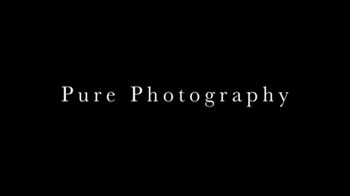It’s a new industry in itself: the market for what’s not here yet. The camera industry in particular plays with the hopes, doubts and expectations of photographers. In part because ever new improvements, functions and promises make believe a photographer’s work improves proportionally to the money spent and technical improvements gained. Fact is, chances are that your best ever photographs are shot with an unspectacular, average, no hyped camera that just happened to be there with you in the right place at the right time.
This in itself, being in the right place at the right time, is the most fundamental requirement to good, rewarding photography. Good photography has little to do with the brand or type of gear a photographer is using.

So busy trying to set up basic operationability, you just missed another decisive moment — in the end those are the moments photography is all about.
These portable convergence devices disguised as cameras churn out photographs by the thousands. However, did you count the keepers. Without vision the most expensive, the newest and the most promising tool is useless.
Yet we’re exposed again and again to temptation. It’s what PetaPixel calls Overdosing on Hype; occurring when a bold new promise is made, packaged in a beautiful marketing campaign. The Nikon Df Pure Photography teasers are a prime example for raising hopes and expectations by touching photographers’ heart mind.
Promising “No clutter, no distractions,” accompanied by a melancholic adagio, a Bohemian no-frills photographers wandering through beautiful Scottish landscape with a mysterious camera around his neck that delivers beautiful mechanical clicks, this lonely soul in picturesque land cleverly personifies what many of us wish for: undistracted, simple, pure photography.
This really hits the nerve of the time. In the words of Luminous Landscape:
Most of our cameras today are full of ugly clutter, convoluted menus, useless functions, an unnecessary explosion of buttons and dials, lack of direct simple access to critical functions, major ergonomic mistakes and big compromises (…)
We need simplicity. We need you to cover the basics properly.
Adds Kirk Tuck, talking about the “graying of traditional photography”:
Apple has it just right. Make things that are simple to own and simple to use. Make menus easier and not harder. Eliminate the need to make unnecessary decisions. Make design more important and ultimacy less important.
Going retro is the latest newer trend initiated by camera manufacturers to move away from these portable computers disguised as cameras. As the megapixel and miniaturization races are finally over for good as well, we may indeed witness a movement away from hyper-technologized snapping back to photography’s essentials.
Slow down, decelerate. All you need is aperture, shutter speed and ISO control.
Don’t get me wrong. I want you to buy as many new cameras as possible. Please consider these Amazon, B&H, Adorama and eBay links for all your purchases. I will earn a small fee and you don’t pay one single cent more. It’s time to get those Christmas gifts — for yourself as well!
But only do so after very careful consideration what’s best for you. I for myself must confess: this upcoming Nikon Df and me look like a match in heaven. I’d hate Nikon if they were to deliver a hyped up dud that’s just more of the same that. I trust Nikon reads the signs of the times — or you’re “not going to be around in five years,” says market analyst Christopher Chute in an article by the Financial Post predicting big camera companies are the next BlackBerry.
So CaNikon might not be around by the turn of the decade? Consumer DSLRs, CaNikon’s former cash cow, are “dead in five years,” promises EOSHD‘s Andrew Reid. Sony on the other hand has seen the writing on the wall better than the past’s market leaders with their ostrich-like mentality.
To be fair: cameras today are a lot about style and differentiation. They all take good enough images. Ultimate quality is now sitting next to the newer trend towards intimacy and immediacy. A big camera is no longer a prerequisite for a place at the table. But where is photography going?
Kirk Tuck:
Where it’s always gone. It’s going along for the ride with popular culture. It’s the traditionalists that feel a sense of loss but the sense of loss is from the constant evolution of tastes and styles. If you look at photo history you’ll see generational warfare at every junction. Resistance to smaller camera formats! Resistance to color film! Resistant to SLR cameras! Resistance to automation!
And in the art you see Robert Frank as the foil to the arch perfectionism of Group 64. You see William Klein as the antidote to the preciousness of Elliott Porter. You see Guy Bourdin as the antithetical antihero to Snowdon and Scuvallo. Each move forward was contentious and cathartic. Just as Josef Koudelka was the revolutionary to Walker Evans.
The camera market is in the doldrums now because it is conflicted. Go with the aging money? Or go with the maturing new markets? Go with a shrinking but loyal market or blaze a new trail based on new cultural parameters? The spoils will go to the companies that get it right.
So… still overdosing on hype? Or too confused to know what’s the perfect camera for you? No reviewer, no analysis, no online research can make that decision for you.
And why would there be a perfect camera. You might have found it even if you go through cameras like others through underwear.
The delivery systems change. Photography doesn’t.
The perfect camera for me is the one I can grow together with by inspiring — well said Nikon — pure photography.


